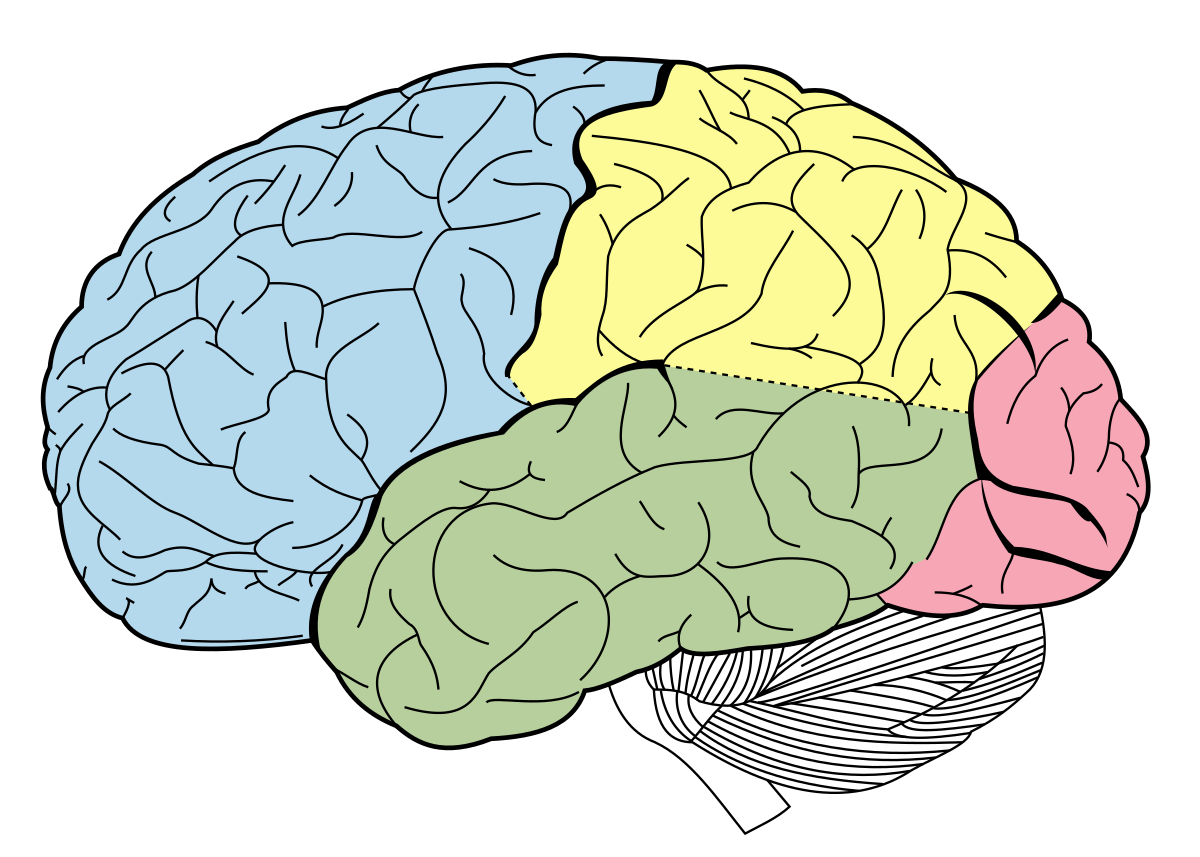Being able to make new friends is an example of this kind of development.
What is social development?
This neurodevelopmental disorder is characterised by
- narrow interests
- repetitive behaviours
Autism Spectrum Disorder (ASD)
A brain injury that occurs after birth and involves an external force.
Traumatic acuired brain injury (ABI)
The neural process that involves a neuron growing new dendritic spines or axon terminals
Sprouting
Parkinson's disease is associated with a loss of this neurotransmitter
Dopamine
Are hereditary factors attributed to NATURE or NURTURE?
Nature - hereditary factors
They can diagnose and prescribe medication for treating mental disorders.
What is a psychiatrist?
 The yellow section of the diagram.
The yellow section of the diagram.
Parietal Lobe
The type of neuroplasticity where changes in the brain occur in response to ageing and maturation
Developmental plasticity
According to emerging research, an early risk factor that is thought to occur in 50% of Parkinson's disease patients.
Constipation
The psychologists who developed theories associated with emotional, cognitive and social development
Emotional - Harlow and Ainsworth (attachment)
Cognitive - Piaget
Social - Erikson
This neurodevelopmental disorder is charcterised by impulsivity and fidgeting
Attention-Deficit/Hyperactivity Disorder (ADHD)
This lobe is responsible for the movement of your left arm.
Right frontal lobe
The type of neuroplasticity that occurs after sustaining a brain injury to restore adequate neural functioning over time
Adaptive plasticity
A bidirectional relationship between the brain and the gut though multiple parts pf the nervous system
Gut-brain Axis (GBA)
Factors that affect your development and wellbeing such as: self-esteem, attitudes, thoughts, beliefs
Psychological factors?
This neurodevelopmental disorder is characterised by reading and writing challenges
Dyslexia
A neurodegenerative disease that is fatal and can only be diagnosed by post-mortem examination
Chronic Traumatic Encephalopathy (CTE)
A neuron's ability to form a new connection with another undamaged neuron
Rerouting
All of the microorgnanisms that live in the gut
Microbiota
According to the BPS model, what types of factors are:
Changes in diet, sleep, hormones, genetic predispositions and sudden dramatic weight-loss
Biological factors
People whose neurological development and cognitive functions deviate from the general norm
Neurodiversity
Speech being slow, laboured and fragmented is a sign of this.
Broca's Aphasia
The three neural process associated with developmental plasticity
Synaptogenesis
Synaptic pruning
Myelination
Contemporary research suggests that Parkinson's disease could be treated by transplanting faecal matter from a healthy donor into the intestinal tracts in order to alter gut microbiota. What is this type of treatment called?
Faecal Microbiota Transplantation (FMT)
What is the term for an increased risk of developing a mood disorder due to family history and what type of factor is this?
genetic disposition
Biological factor
Three examples of neurodivergent conditions
ADHD
Autism Spectrum Disorder (ASD)
Dyslexia
Tourette's Syndrome
What are the 2 types of acquired brain injury (ABI), how are they distinguished, and give an example of each
Traumatic: external force: falls, sports injuries, vehicle accidents, assaults, combat
Non-traumatic: internal factors: stroke, aneurysm, tumor, substance abuse
The four ways to maintain (and maybe even enhance) brain functioning and an example of each.
Mental stimulation - puzzles, crosswords, learning new things (language, how to play an instrument)
Diet - healthy eating, fruits and veg
Physical activity - jog, sport, mow the lawn
Social support - friends, family, community
Distinguish between neurological disorders and neurodegenerative diseases
Neurological disorders are diseases characterised by any damage to, or malfunctioning of, the nervous system, whereas neurodegenerative diseases are characterised by the progressive loss of neurons